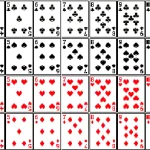Understanding Time: How Many Seconds Are in a Month?
Time is a fundamental aspect of our lives, and understanding its divisions is crucial for various applications, from scheduling events to scientific calculations. One common question that arises is: how many seconds are in a month? The answer varies depending on the month in question, as months have different lengths. This article will delve into the specifics of calculating seconds in a month, the implications of these calculations, and more.
1. Basic Time Calculations
Before we dive into the specifics of months, let’s establish some basic time calculations:
- 1 Minute = 60 seconds
- 1 Hour = 60 minutes = 3,600 seconds
- 1 Day = 24 hours = 86,400 seconds
2. Seconds in Different Months
The number of seconds in a month varies based on the number of days in that month. Here’s a breakdown of the number of seconds in each month:
| Month | Days | Seconds Calculation | Total Seconds |
|---|---|---|---|
| January | 31 | 31 days × 86,400 seconds/day | 2,678,400 |
| February | 28 | 28 days × 86,400 seconds/day | 2,419,200 |
| February | 29 | 29 days × 86,400 seconds/day | 2,505,600 |
| March | 31 | 31 days × 86,400 seconds/day | 2,678,400 |
| April | 30 | 30 days × 86,400 seconds/day | 2,592,000 |
| May | 31 | 31 days × 86,400 seconds/day | 2,678,400 |
| June | 30 | 30 days × 86,400 seconds/day | 2,592,000 |
| July | 31 | 31 days × 86,400 seconds/day | 2,678,400 |
| August | 31 | 31 days × 86,400 seconds/day | 2,678,400 |
| September | 30 | 30 days × 86,400 seconds/day | 2,592,000 |
| October | 31 | 31 days × 86,400 seconds/day | 2,678,400 |
| November | 30 | 30 days × 86,400 seconds/day | 2,592,000 |
| December | 31 | 31 days × 86,400 seconds/day | 2,678,400 |
3. Total Seconds in a Year
To understand the context of seconds in a month, it’s helpful to know the total number of seconds in a year. A common year has 365 days, while a leap year has 366 days. Here’s how to calculate it:
- Common Year:
365 days×86,400 seconds day=31,536,000 seconds - Leap Year:
366 days×86,400 seconds day=31,622,400 seconds
4. Importance of Knowing Seconds in a Month
Understanding the number of seconds in a month can be crucial for various reasons:
- Time Management: In project management, knowing the exact number of seconds can help in planning and scheduling tasks.
- Scientific Calculations: In fields like physics or chemistry, precise time measurements are essential for experiments and calculations.
- Financial Calculations: Interest calculations, billing cycles, and other financial metrics often require precise time measurements.
5. Applications of Time Calculations
Calculating seconds in a month can be applied in various fields:
- Technology: In programming, time calculations are essential for performance metrics, scheduling tasks, and managing timeouts.
- Healthcare: In medical research, understanding time intervals can be crucial for studies involving time-sensitive data.
- Education: Teaching students about time and its measurements can enhance their understanding of mathematics and science.
FAQ Section
Q1: How many seconds are in a standard month?
A: A standard month has either 28, 30, or 31 days, resulting in different total seconds. For example, February has 2,419,200 seconds (28 days) or 2,505,600 seconds (29 days in a leap year).
Q2: How do you calculate seconds in a month?
A: To calculate seconds in a month, multiply the number of days in the month by the number of seconds in a day (86,400 seconds).
Q3: Why is it important to know the number of seconds in a month?
A: Knowing the number of seconds in a month is important for time management, scientific calculations, financial metrics, and various applications in technology and healthcare.
Q4: Are there any months with the same number of seconds?
A: Yes, months with the same number of days have the same number of seconds. For example, April, June, September, and November all have 30 days, resulting in 2,592,000 seconds.
Q5: How many seconds are in a year?
A: A common year has 31,536,000 seconds, while a leap year has 31,622,400 seconds.
Q6: What is a leap year?
A: A leap year occurs every four years when an extra day (February 29) is added to keep the calendar year synchronized with the astronomical year.
Q7: How does time calculation affect programming?
A: In programming, precise time calculations are essential for scheduling tasks, managing timeouts, and optimizing performance.
Q8: Can I convert seconds into other time units?
A: Yes, you can convert seconds into minutes, hours, or days by dividing by the appropriate factors (60 for minutes, 3,600 for hours, and 86,400 for days).
Q9: How many minutes are in a month?
A: To find the number of minutes in a month, multiply the number of seconds by 60. For example, February has 28 days, which equals 41,600 minutes.
Q10: Where can I find more information about time measurements?
A: For detailed information on time measurements, you can visit Wikipedia on Time.
Conclusion
Understanding how many seconds are in a month is a fundamental aspect of time management and calculations. With this knowledge, individuals can better plan their activities, manage projects, and conduct scientific research. The variations in the number of seconds across different months highlight the complexity of time measurement and its applications in our daily lives.This article provides a comprehensive overview of the topic, ensuring that readers have a solid understanding of how to calculate and apply time measurements effectively. If you have any further questions or need additional information, feel free to ask!



